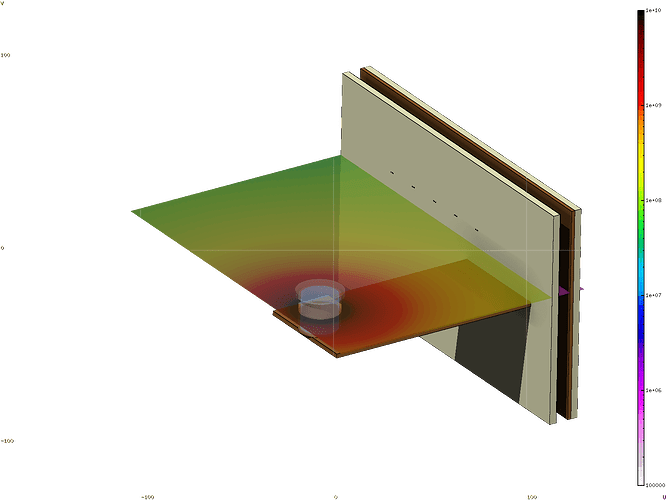Dear FLUKA Community,
I have developed a model for my pilot study, which consists of a phantom placed on a table next to a wall. A set of thermoluminescent dosimeters (TLDs) are positioned on the wall. The phantom can be either a body phantom (containing a Tc-99m source) or a neck phantom (with an I-131 capsule in a vial). The TLDs are exposed to radiation from the phantom, and their readings analysed.
pilot_study.flair (13.1 KB)
pilot_study.inp (9.6 KB)
For this, I have set USRBIN cards to score by REGION. Additionally, I included two mesh USRBIN cards to measure photon and electron fluence around the phantom. This setup will be recreated experimentally in the near future to compare measurements.
Before conducting the physical experiment, I would greatly appreciate any feedback on my model—particularly regarding geometry setup, physics settings, optimisation, and general accuracy—as this is my first major project. I have attached the flair and input files for reference.
I have several questions, and while I understand they may require detailed responses, any input on any of them would be highly valued. I also apologise if the topic selection is not entirely appropriate due to the diverse nature of my queries.
Questions:
- I have multiple warnings, that I am aware of, about intersecting boundaries, especially for the TLDs on the wall. These are ideally set using infinite planes. Will this significantly affect my results (i.e., precision) if I keep them as is? If so, how exactly? I could not find much discussion on this.
- Are my physics settings correct? This is an area where I lack confidence, particularly in defining production/cut-off thresholds and other relevant parameters.
- My simulation runs for about 20 hours with 5E8 histories across 5 parallel jobs, achieving <2% uncertainty per TLD, which seems reasonable for running on a personal PC. However, how can I improve this further? I read in another post that region biasing in air is not recommended, but I do not understand why. What other biasing techniques could I apply? Additionally, increasing the number of particles beyond my current settings is not significantly reducing uncertainty (only by a few tenths of a percent).
- Is my normalisation 2.5E13 / (0.38 × 0.38 × 0.09) * 1E-6 for region bins correct? The 2.5E13 is the expected disintegrations in my physical experiment, (0.38 × 0.38 × 0.09) are the TLD sizes, and 1E-6 is conversion from pSv to µSv.
- How does my bin size selection for the mesh score impact results? Is there an optimal method for determining bin size based on the model?
- Are there any other ways to optimise my simulation in terms of runtime, accuracy, geometry definition, physics settings, etc?
I have also attached an image of one of the mesh scores overlaid on the geometry to illustrate my results.
Any advice would be greatly appreciated!
Samuel
